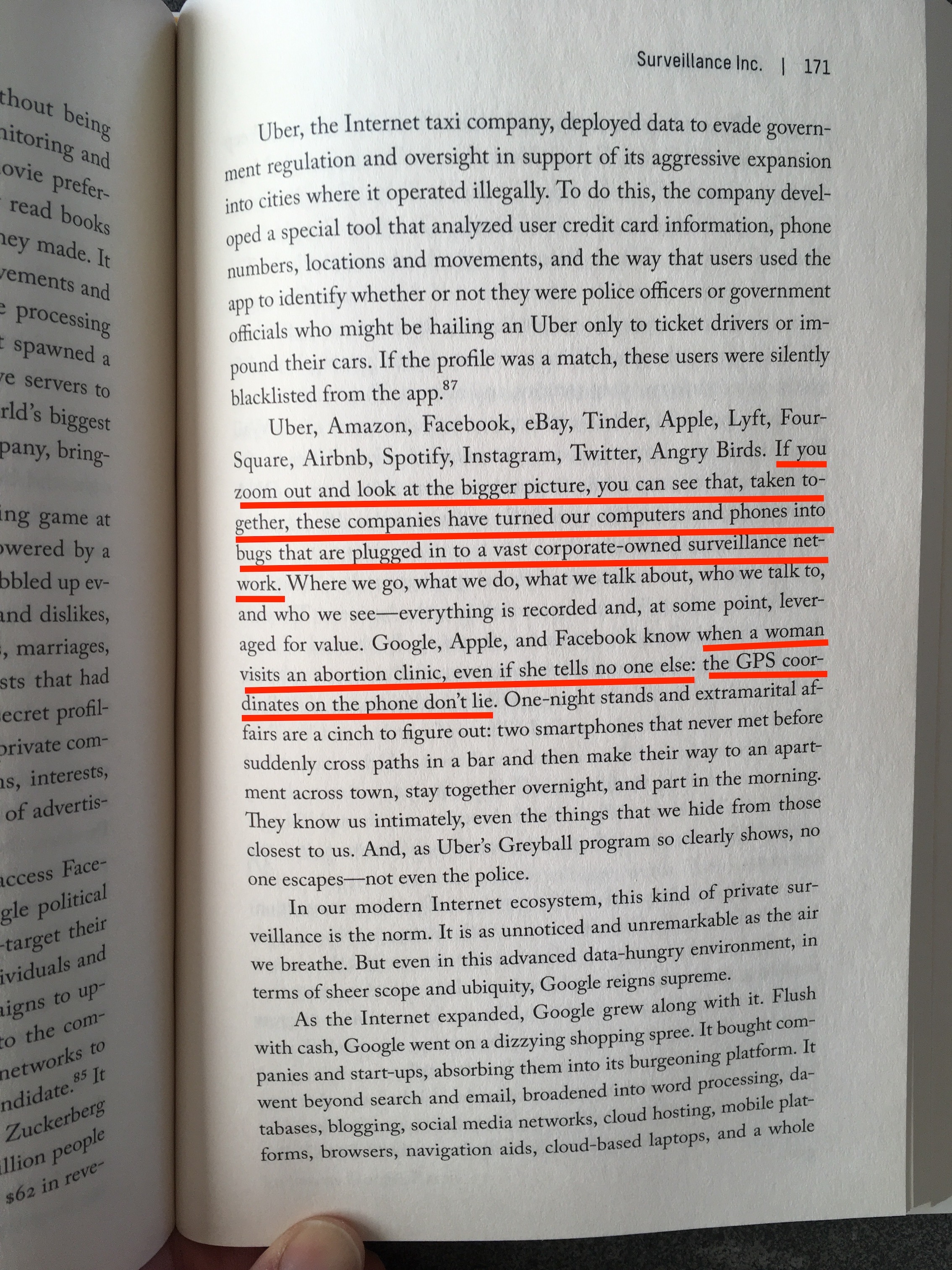It's a drag to be right so often
The New York Times published a great, long investigation into how our smartphone apps spy on us every moment of every day. The paper got its hands on a location surveillance database compiled by various smartphone apps that's available for sale, and it was shocked by what it found. The data gave its journalists God's eye view of millions of people as they lived their lives in New York — watching them as they went the gym, to abortion clinics, to work. It even allowed them to single out government employees and to track a staffer with New York mayor Bill de Blasio as they travelled around the city on official business.
Reading the story...well...I hate to brag, but it really is a drag to be right so often. Surveillance Valley called it — right down to the abortion clinic spying.
No matter what's plugged into it, the Internet is a giant surveillance machine.

The New York Times did great work on this article. But like a lot of reporting that deals with the Internet, the premise is wrong. The fact that these apps are collecting and selling our private data should not come as a surprise. As I show in my book, surveillance is not a bug, but a feature. The internet was designed to be a surveillance machine — that's been its central function from the moment the tech was developed by the Pentagon in the late 1960s. And really, it goes back even earlier: all computer technology, starting with 19th century punch card tabulators, were about watching and tracking people and the world.
—Yasha Levine